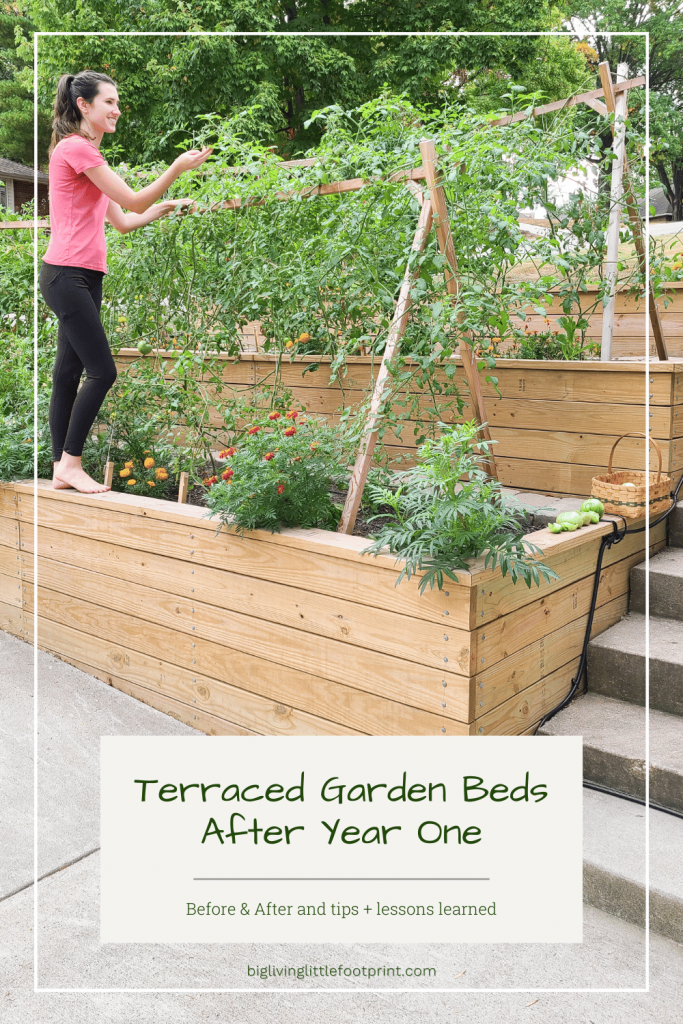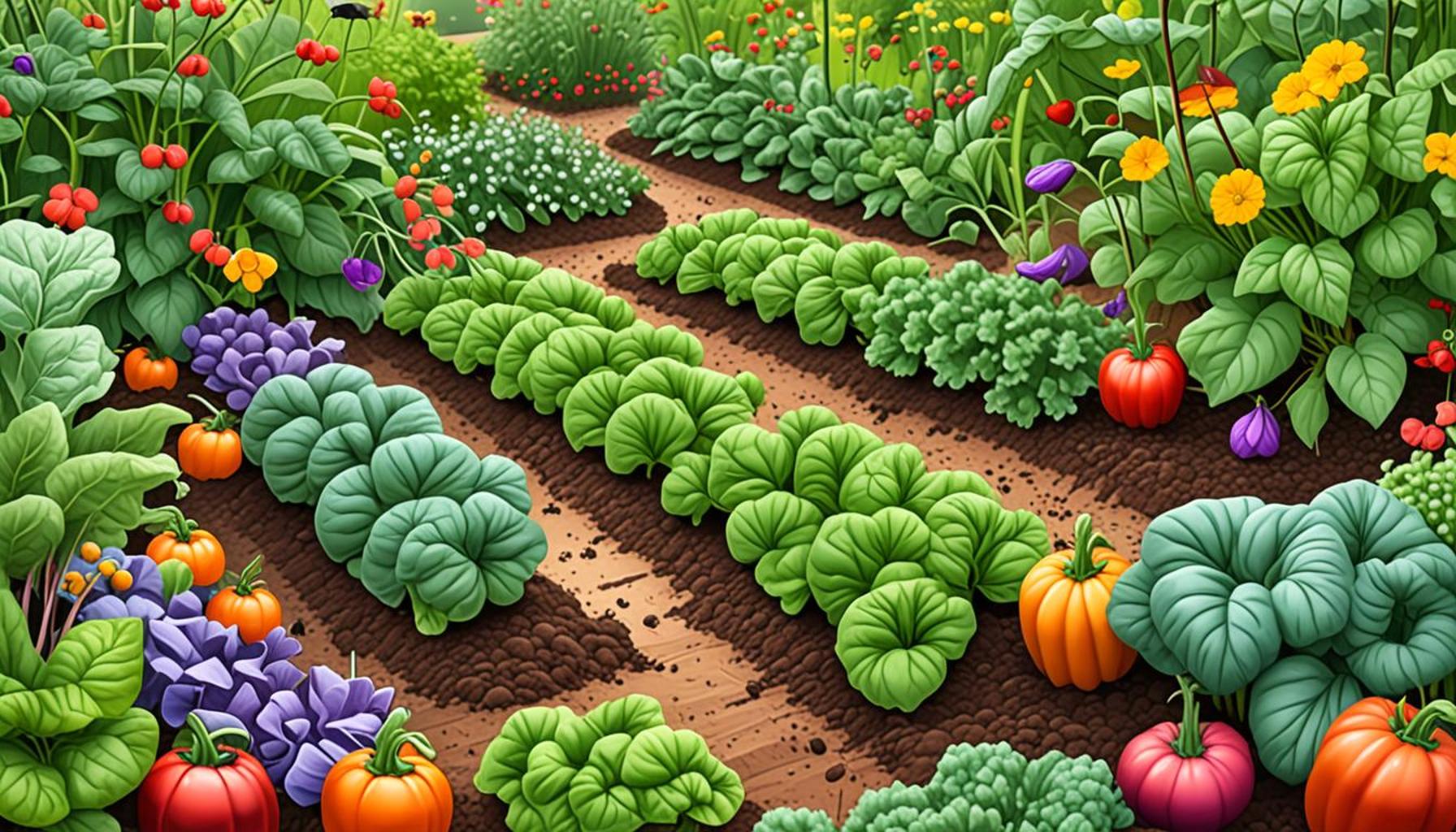Planning Your Vegetable Garden: How to Create an Efficient Layout

Understanding the Essentials of Garden Layout
Creating a productive vegetable garden involves more than just planting seeds in the ground. Efficient layout planning is essential to maximize yield, save time, and minimize maintenance. Whether you are a beginner or an experienced gardener, understanding how to organize your garden can make all the difference. An effective layout not only boosts productivity but can also enhance the aesthetic appeal of your space, making gardening a more enjoyable activity.
Consider these key aspects when planning your garden layout:
- Sunlight Exposure: Different plants have varying light requirements. For instance, tomatoes and peppers thrive in full sun, which means they need at least six to eight hours of direct sunlight each day. On the other hand, leafy greens like lettuce can tolerate partial shade. When planning your garden layout, observe how sunlight moves through your garden throughout the day and position taller plants toward the north to prevent them from overshadowing shorter varieties.
- Soil Health: Healthy soil is the backbone of a productive garden. Regularly assess your soil quality by testing pH levels and nutrient content, and consider enriching the soil with organic matter such as compost or well-rotted manure. Different crops require varying nutrient levels; for instance, root vegetables like carrots need loose soil to grow properly, while heavy feeders such as corn and squash draw more nutrients.
- Crop Rotation: Implementing crop rotation is beneficial for maintaining soil fertility and minimizing pest issues. By rotating crops from the same family (for example, nightshades like tomatoes, potatoes, and eggplants), gardeners can prevent the buildup of soil-borne diseases and pest populations. For instance, planting legumes such as beans after heavy feeders can enhance soil nitrogen levels, providing essential nutrients for the following crops.
- Companion Planting: This strategy involves pairing plants that support each other’s growth. A classic example is planting basil alongside tomatoes. Basil not only repels certain pests, such as aphids and whiteflies, but it can also enhance the flavor of the tomatoes. Other beneficial combinations include marigolds with nearly any vegetable to deter nematodes and mixed planting of carrots and onions to confuse pests.
- Accessibility: Easy access to all parts of the garden simplifies maintenance and harvesting. Consider designing your layout with pathways that allow for convenient movement between rows, while ensuring that you can reach plants without stepping on the soil, which can compact it and hinder root growth. Raised beds or containers can also improve access and reduce the physical strain of gardening.
By investing time in planning an organized layout, you’ll not only create an attractive garden but also a thriving one. Understanding the relationships between various elements in your garden will provide long-term benefits, leading to better harvests. Intertwining these strategies with your unique gardening goals can transform your vegetable garden into a bountiful sanctuary. Dive deeper into these gardening strategies and discover how to create an efficient layout that meets your gardening objectives.
DISCOVER MORE: Click here to learn about the importance of composting
Designing Your Garden Layout for Maximum Efficiency
When it comes to planning your vegetable garden, the layout is fundamental to achieving a fruitful harvest. Thoughtful placement of plants, pathways, and structures can transform your garden from an unorganized patch of soil into a well-oiled production system. Let’s explore some practical strategies to consider in order to optimize your garden layout, ensuring your efforts yield the best results.

Utilizing Vertical Space
One effective way to maximize a small garden is by considering vertical gardening. This approach allows you to grow plants upwards rather than outwards, increasing your yields and allowing for better air circulation around plants. Trellises for climbing vegetables like peas, cucumbers, and pole beans can save valuable ground space while also creating a visually stunning effect. Additionally, hanging planters or wall-mounted gardens can be utilized for herbs, creating an accessible and efficient growing space right outside your kitchen.
Planting in Rows or Blocks
The two most popular planting methods are rows and blocks. Each has distinct advantages:
- Row Planting: Ideal for larger gardens, this method involves planting vegetables in straight lines. It facilitates easy access for maintenance, such as weeding and harvesting. Row planting is particularly effective for crops that require ample spacing, such as corn.
- Block Planting: This method clusters plants closer together in a defined area, maximizing yield by utilizing soil nutrients more effectively. It can be particularly beneficial in smaller gardens, as it allows for easier irrigation and may promote faster maturity through mutual shading.
Choosing between these methods depends largely on the size of your garden and the types of vegetables you wish to grow. For instance, leafy greens thrive in a block style, whereas larger crops often do better in rows.
Mapping Out Your Garden
Once you’ve chosen your planting method, it’s crucial to create a garden map. Sketching out your garden allows you to visualize the arrangement of crops and helps ensure that you are accounting for changes throughout the growing season. Consider factors such as:
- Growth Stages: Planting crops that mature at different rates can allow for continuous harvesting. For example, plant fast-growing radishes alongside slower maturing carrots.
- Watering Needs: Group plants with similar water requirements so that you can irrigate efficiently, reducing water waste and optimizing moisture retention.
- Harvesting Time: Ensure that crops that need to be harvested at the same time are relatively close together to streamline the collecting process.
By taking the time to plan and map out your garden layout, you not only promote a healthy ecosystem within your vegetable garden but also make the gardening experience far more rewarding. Each of these elements integrates to foster a productive growing environment, facilitating both the pleasure and success of your gardening endeavors.
| Category | Details |
|---|---|
| Efficient Space Utilization | By planning your layout, you can maximize available space, allowing for more plant variety and better growth. |
| Optimal Sunlight Exposure | Arranging plants by height and needs ensures that all crops receive adequate sunlight, enhancing photosynthesis. |
| Crop Rotation and Companion Planting | A well-planned garden layout allows for effective crop rotation and maximizes benefits of companion planting. |
| Accessibility | Creating pathways in your layout enhances accessibility for planting, watering, and harvesting, making maintenance easier. |
When planning your vegetable garden, consider the benefits of selecting a proper layout. With an organized garden, you can increase your yield and enhance the health of your plants. Take into account your local climate, soil conditions, and the specific needs of the vegetables you wish to grow, customizing your garden design accordingly. Research carries significant value, as understanding the growth habits and spacing of each vegetable is crucial to establishing a successful garden.Furthermore, incorporating elements such as raised beds or vertical gardening can dramatically improve your space efficiency. Raised beds often heat up quicker in the spring and can make it easier to manage soil conditions, while vertical gardening maximizes space and can lead to better air circulation. It’s essential to align your interests and needs with sustainable practices that not only benefit your garden but also the environment, leading to a resilient and productive garden. Engage in this exciting journey of garden planning, and you will uncover the art of efficient vegetable gardening.
DISCOVER MORE: Click here to learn how to choose the perfect vase for your decor</a
Companion Planting and Crop Rotation Strategies
In the quest for an efficient vegetable garden layout, companion planting and crop rotation are often overlooked techniques that can significantly enhance your garden’s productivity. By strategically pairing certain plants, you can create a symbiotic relationship that promotes growth, improves pest control, and maximizes space utilization, leading to a more vibrant and healthy garden.
Understanding Companion Planting
Companion planting refers to the practice of growing different plants in proximity for mutual benefits. Certain combinations can help to repel pests, attract beneficial insects, and enhance nutrient uptake. For instance:
- Tomatoes and Basil: These two not only thrive together but basil can enhance the flavor of tomatoes while also repelling aphids and tomato hornworms.
- Corn, Beans, and Squash: Commonly referred to as the “Three Sisters,” this trio exhibits a classic example of companion planting. Corn provides support for beans to climb, beans fix nitrogen in the soil, and squash spreads to shade the ground, reducing weed growth.
- Marigolds with Almost Any Vegetable: When planted among your crops, marigolds can deter nematodes and other garden pests, making them a fantastic companion for nearly any vegetable.
Researching which plants complement each other in your specific climate is essential for maximizing your garden’s potential. Many resources are available, both online and in gardening books, to help guide you in selecting appropriate companions.
Implementing Crop Rotation
Another critical aspect of planning an efficient vegetable garden layout involves crop rotation. This practice minimizes soil depletion and reduces the risk of pests and diseases that can accumulate in the soil over time. Rotating crops means planting different species in a particular location each year. Here are essential principles to consider:
- Diverse Plant Families: Rotate crops among different families (e.g., legumes, brassicas, and nightshades) to disrupt pest and disease cycles that target specific families.
- Nutrient Management: Different plants have varying nutrient needs. For example, legumes can fix nitrogen in the soil, making that spot healthier for heavy feeders like tomatoes the following year.
- Soil Structure Improvement: Deep-rooted plants, such as carrots, help break up soil compaction, improving overall soil health when rotated with shallow-rooted crops.
Designing for Crop Diversity
When laying out your garden, consider the concept of intercropping — growing two or more crops in proximity to one another. This method not only fosters biodiversity but also promotes resilience against diseases and pests. For example, planting lettuce between rows of slower-growing crops like tomatoes or peppers can maximize space while allowing for efficient use of sunlight and water. Furthermore, cultivating a diverse range of vegetable varieties can lead to a more stable ecosystem that attracts beneficial insects and balances out pest populations.
As you plan your vegetable garden layout, integrating these strategies empowers you to develop a flourishing garden that is both efficient and rewarding. By utilizing companion planting and crop rotation principles, you ensure that your plot thrives year after year, ultimately yielding a bountiful harvest. Whether you’re a seasoned gardener or a beginner, these methods foster a deeper understanding of plant interactions, leading to a vibrant and sustainable gardening experience.
DISCOVER MORE: Click here to uncover creative solutions
Conclusion
In conclusion, successful planning of your vegetable garden hinges on a well-thought-out and efficient layout that prioritizes plant interactions and cultivation techniques. By embracing strategies such as companion planting and crop rotation, you can cultivate a harmonious environment that not only promotes plant health but also enhances productivity and pest resistance. Understanding the unique relationships between various plants allows you to maximize your space, leading to a diverse and bountiful harvest.
Moreover, considering concepts like intercropping and crop diversity can greatly increase the resilience of your garden against environmental stresses. Integrating these methods fosters a vibrant ecosystem, attracting beneficial insects and naturally balancing pest populations. Think of your vegetable garden as a dynamic community where each plant plays a vital role in nurturing the whole.
As you set out to design your vegetable garden, remember to research local climate conditions and grow spaces specific to your area. This knowledge not only guides you in plant selection but also in the timing of planting, ultimately paving the way for a thriving garden. With these insights, both novice and experienced gardeners can create layouts that inspire productivity and sustainability. Start your planting journey today, and enjoy the rewards of a well-planned vegetable garden that yields fresh produce for your table.



